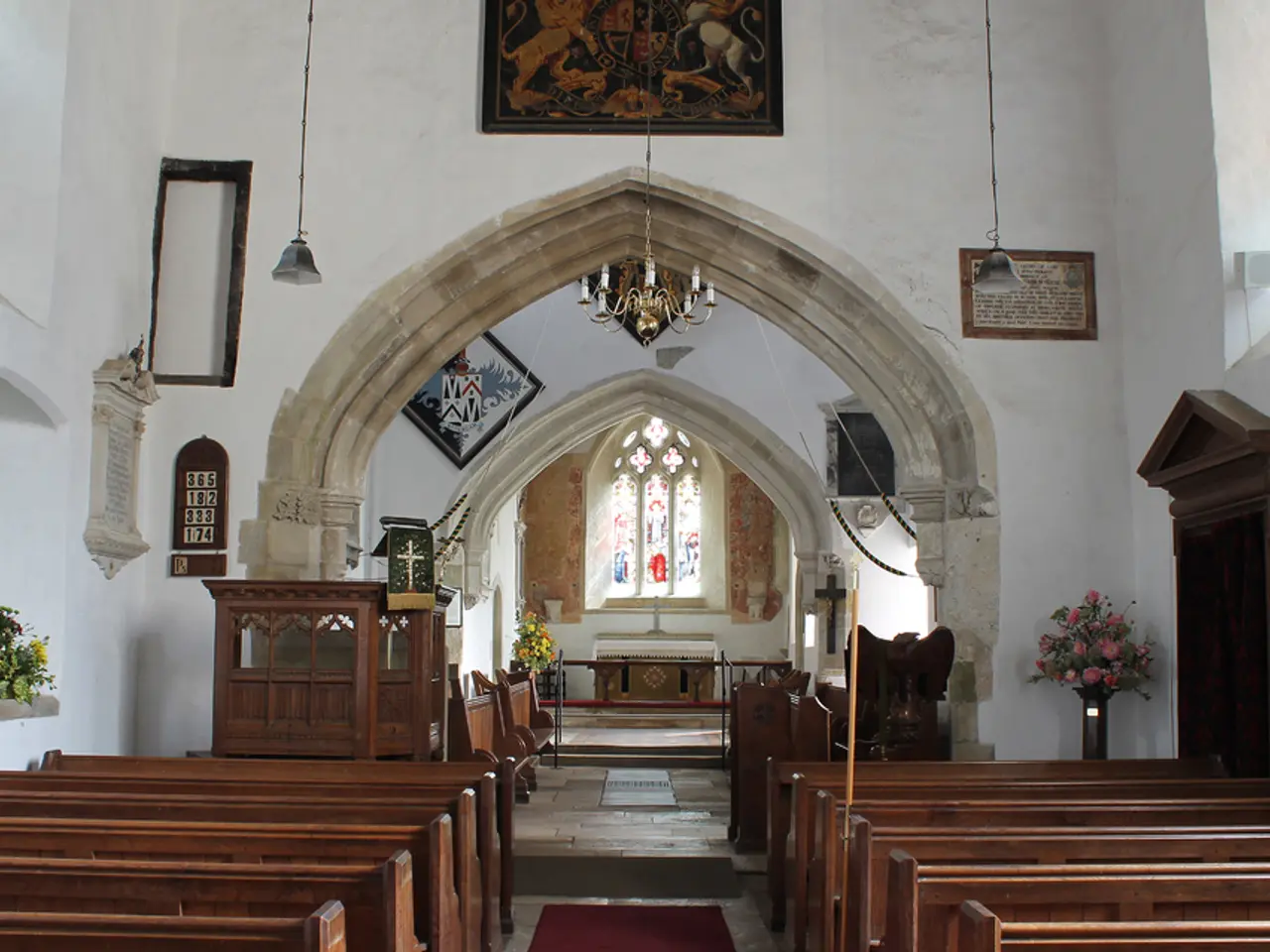Group donning mountain garb associated with Rorate Party
======================================================================================
In the heart of Bavaria, Germany, the town of Schwarzenfeld recently celebrated a unique Advent tradition: the Miners' Rorate. This event, held in the Dionysius Church on Schlossstraße, is a testament to the region's mining heritage and the spiritual bond between the miners and their community.
The Miners' Rorate is a special variation of the Rorate Mass, a traditional Catholic service celebrated during Advent. Named after the Latin phrase "Rorate caeli," which means "Drop down dew from above, O heavens," these Masses symbolize the spiritual light and hope that comes with the approaching birth of Jesus Christ.
In mining communities, the Rorate Masses take on an additional layer of meaning. Miners, who often worked in darkness underground, would hold these early morning Masses to pray for safety and protection. The Miners' Rorate in Schwarzenfeld likely follows this pattern, with the Mass being celebrated early in the morning, perhaps at dawn, to symbolize the beginning of the day and the light of hope.
The Stullner Singers, a local choir, concluded the Mass with "The Miner in Black Garb," a song that emphasizes the hard work in the mine, the importance of mining for society, and the backbreaking labor involved.
The performance was accompanied by Heinz Prokisch on accordion, adding a traditional touch to the music. The miners' guilds from Stulln/Schwarzenfeld and Wölsendorf/Marienschacht processed through the church in their miner's attire, further highlighting the event's historical and cultural significance.
The Miners' Rorate featured a mix of traditional hymns and local folk songs. The Advent hymn "Rorate" and "Have Mercy, Good Father" from the Bleiberg miners' mass by Erwin Lackner were sung, as well as "In the Darkness Lay the Whole World" from the Christkindl Mass by Fritz Morgenschweis and Adolf Eichenseer.
The interior of the Dionysius Church was illuminated by around 150 candles, casting a warm, inviting glow over the congregation. The group of saints in the ceiling painting, including Margaret, Catherine, and Barbara, were depicted with attributes related to mining (chalice and tower), further emphasizing the connection between the community's faith and its mining heritage.
The final song of the Mass was "Now the Hours Draw Near," a folk song expressing the uncertainty of finding an inn for the divine child. "Lord, We Thank Thee" was sung after "Now the Hours Draw Near," marking the end of the service.
The performance of the Miners' Rorate served as a guide to the Christmas festival, setting a spiritual and community-focused tone for the upcoming celebrations. The emotional performance of the songs during the Christmas festival was met with applause from the audience, which lasted for a long time, showing their appreciation for the musical performance.
For those interested in learning more about the Miners' Rorate in Schwarzenfeld, contacting local historical societies or community organizations in the area might provide additional insights into this unique and meaningful tradition.
- The Other cultural-travel attraction in Bavaria, Germany, that stands out for its unique celebration is the Miners' Rorate in Schwarzenfeld, which incorporates local folk music and a livelier atmosphere into its traditional original basis.
- For enthusiasts of entertainment beyond the ordinary, the Miners' Rorate offers an unparalleled experience, including performances by the Stullner Singers and the processing of miners' guilds in authentic attire, filling the event with a lively, historical ambiance.
- To complement your travels and explore various lifestyles, consider experiencing the Miners' Rorate as part of your itinerary, observing how the local mining heritage and spiritual bond between miners and their community come together in this special Advent tradition.





